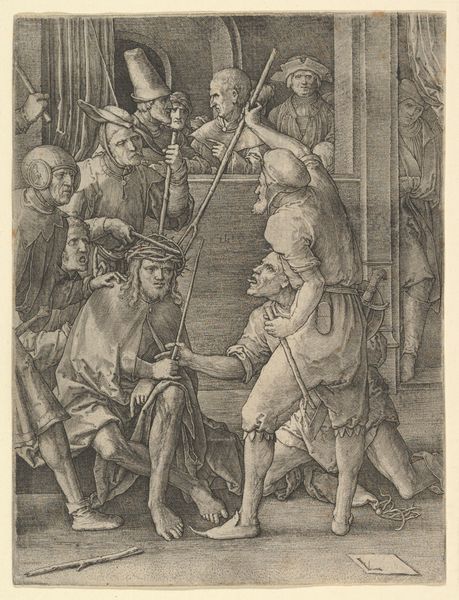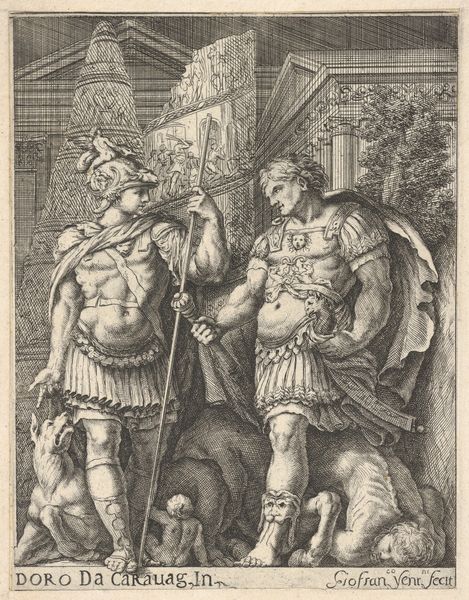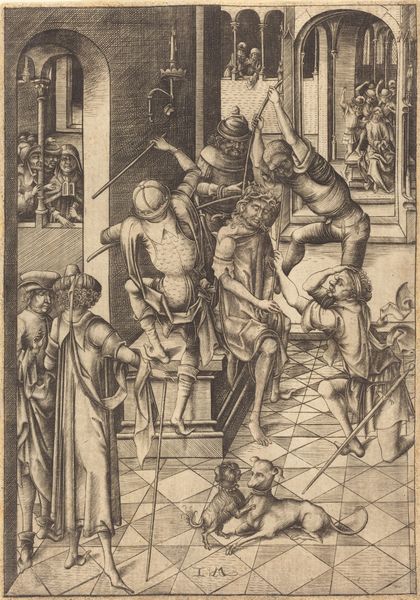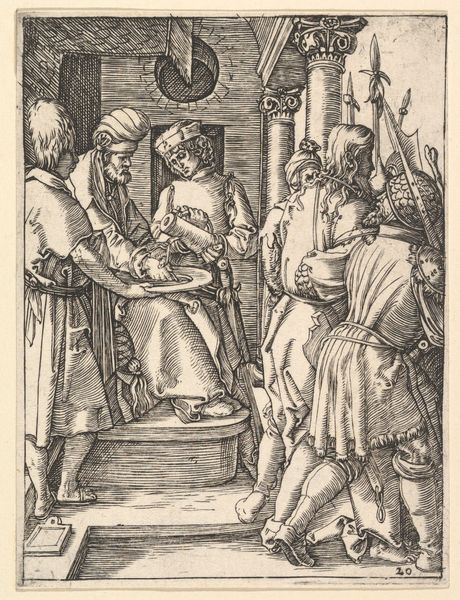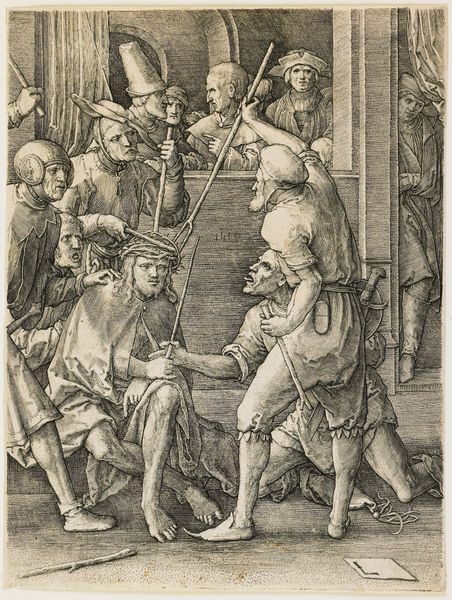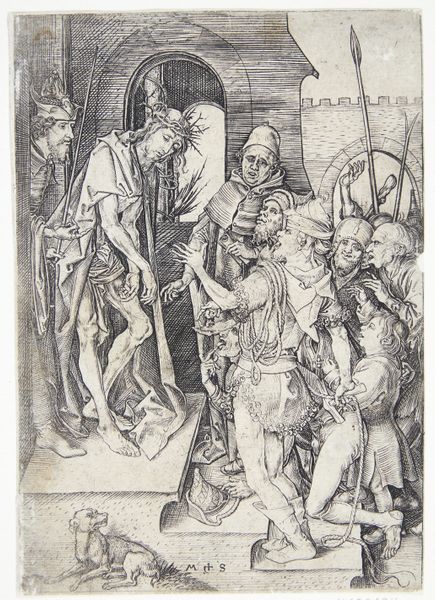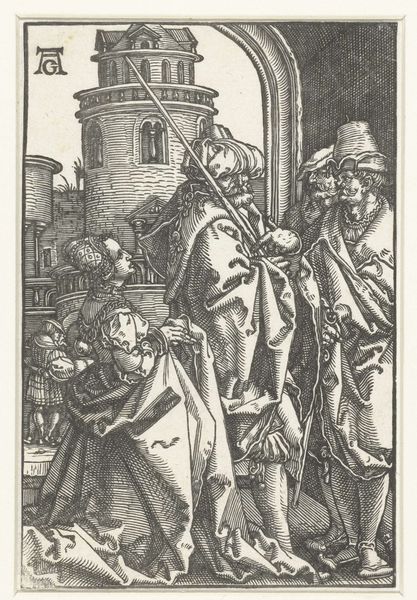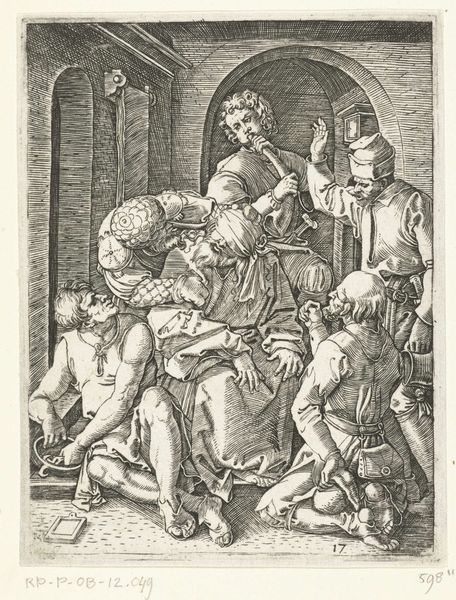
drawing, print, engraving
#
drawing
# print
#
figuration
#
soldier
#
men
#
history-painting
#
engraving
Dimensions: For the whole series: plate circa : 5 x 3 13/16 in. (12.7 x 9.7 cm)
Copyright: Public Domain
Curator: Today we're looking at "Engraved copies of The Little Passion," prints by Albrecht Durer, dating from 1485 to 1699. They're currently held at the Metropolitan Museum of Art. Editor: This is intense. The dark lines really give it a harsh, almost brutal feeling. There's so much going on in such a small space, and I'm immediately drawn to the figure being presented to the man seated on the throne. What can you tell me about how Durer uses line and form here? Curator: Notice how Dürer's mastery of engraving allows him to create a remarkable sense of depth and texture, even without color. Observe the meticulous cross-hatching. How does this technique contribute to the overall impact of the print? Editor: It creates strong contrast and defines the shapes, adding to that dramatic tension I felt at first glance. Are there ways that the composition draws your eye to a focal point? Curator: Absolutely. Consider the central placement of the figure kneeling, juxtaposed with the imposing figure on the throne. The convergence of lines and gazes emphasizes the power dynamic within the scene, but it's important to acknowledge the spatial flattening, almost compression of space. Why do you think Dürer, or rather his copyist, employs this stylistic device? Editor: I suppose it intensifies the scene, placing us right in the moment. The figures seem crowded and chaotic. Almost claustrophobic! Curator: Precisely. It heightens the emotional impact of the Passion. The rigid lines evoke the emotional austerity of the era, yes? Consider the geometry of suffering expressed in pure, visual terms, and ask what meaning we draw from this. Editor: That’s interesting…seeing the “geometry of suffering.” I hadn't thought about it that way. Curator: These formal qualities enhance the narrative but also exist as self-sufficient entities. What did you get out of viewing these prints with me? Editor: I appreciate understanding how the artistic style is integral to understanding what's portrayed. It helps connect to the work more deeply. Thanks.
Comments
No comments
Be the first to comment and join the conversation on the ultimate creative platform.

